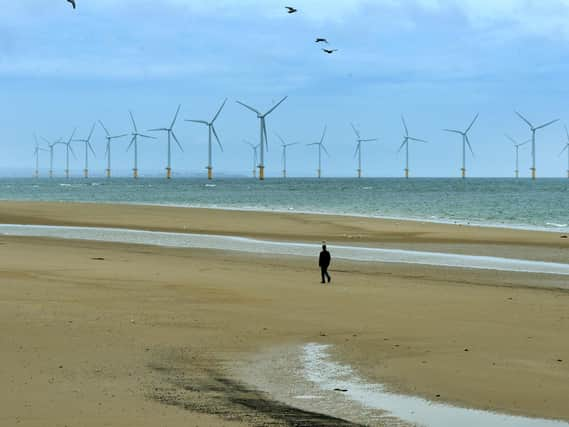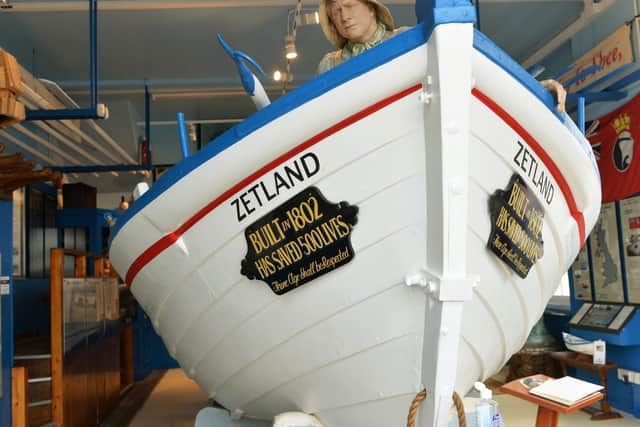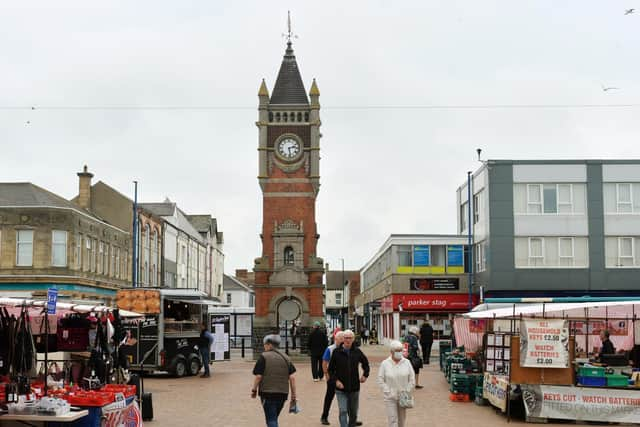If Redcar had its own anthem it would be Gloria Gaynor’s I Will Survive


Sometimes, public protest pays off. So when the folk of Redcar heard that their beloved lifeboat was going to be broken up they turned out en masse to complain. There’s a proud seafaring tradition in these parts, and no way were the locals going to let the vessel that had saved hundreds from a watery grave be smashed up for scrap timber.
It all began a few years earlier, when the Tees Bay Lifeboat Society decided to hand over the running of its boats to the Royal National Lifeboat Institution. At the time, a sound and sensible move, since the RNLI had more resources. The lifeboat was called the Zetland (named after the local landowner – the name is a variant on the Scottish “Shetland”), and she had been stationed in Redcar since 1802. Built in South Shields by the renowned naval architect Henry Greathead, she had over half a century of rescue missions behind her.
Advertisement
Hide AdAdvertisement
Hide AdAlong with all the successes, there were also poignant reminders of the power of the sea, and the human tragedies that can occur. On Christmas Day in 1836, the Zetland was called out to assist the crew of the Danish brig Caroline. One of the Redcar men was William Guy, a Tees pilot, and he had left his place in the chapel pews, where he was attending a service, to do his duty with his colleagues. He never returned. Poor William was washed overboard in the heavy swell and drowned. It was stories like this, of selfless bravery, which made the townspeople so angry when they learned of the potential fate of the Zetland.


And, of course, they won the day. This doughty little craft went on serving (and saving the lives of sailors) for many more decades. In fact, she is now believed to be the world’s oldest surviving lifeboat. She was given the prime place of honour at the International Lifeboat Conference in Edinburgh in 1963, and she is now the main exhibit at Redcar’s Zetland Lifeboat Museum, itself a listed building on the town’s Esplanade. And just across the way is, as you’ve probably guessed, the present Redcar Lifeboat Station, which currently has two active boats, an Atlantic 85 and an IB1.
That sense of community spirit is also well evident in the shape of the Redcar Pier Association, a fairly recently formed group, whose aim is to see a new pier for the town that would be, as it puts it, “a place of inspiration to both young and old, a place of culture, arts, history, nature, education and entertainment”.
The association also decided that it should be a people’s pier with money raised by locals and has put out calls inviting help, advice and support.
Advertisement
Hide AdAdvertisement
Hide AdThe much-loved old pier finally fell foul of the demolition experts in 1980. It had opened in 1873, and the name of Zetland pops up again, for the Earl of the day had made a generous donation toward its construction. When Rear Admiral Challoner cut the official ribbon, he was offering the public access to a structure that was 1,300 feet long and 20 feet wide, with a landing stage for steamers at the seaward end, and a bandstand that could play to audiences of 700. It had cost over £11,000.


The pier, though, was blighted by bad luck. Various ships collided with it, and if it wasn’t a collision, it was a mysterious fire. It also withstood the explosive attention of a Second World War mine. Cut in two at the start of that conflict – because of security arrangements – the old girl never got put back together again, and, when she was finally scrapped, the salvaged metal went for just £250.
There was a sister pier at Coatham, the Victoria, and her story is almost as sad. When she opened in 1875, visitors could stroll 1,800 feet to the end. But it, too, proved to be a magnet for passing ships and there were several collisions. When the company that owned the Victoria failed in 1899, all that was left for the public were the entrance kiosks, and a pavilion for roller skating, later converted to become the New Pavilion Theatre, and later still the Regent Cinema. Local legend has it that the building (only recently demolished) was so draughty and cold that performers had to wear thermal underwear even during summer.
Redcar has always set its sights seaward. It was just one of the places on the Yorkshire coast where the Vikings landed, and where they beached their longboats – the town’s name is probably derived from a pair of ancient words, the Anglo-Saxon “Hreod” and the Norse “Kjarr”. The first translates into “reeds” and then second is “marshland”.
Advertisement
Hide AdAdvertisement
Hide AdIt wasn’t given any reference in the 1086 Domesday Book (but nearby Marske-by-the-Sea got an entry), and it appears to have been a small hamlet, ambling along pretty well until the 14th century, when it developed as a fishing centre. But the trigger for the town’s rapid growth (there were under 800 citizens when Victoria took the throne) was, as with so many other communities, the arrival of a railway link. This brought in many visitors who enjoyed the bracing sea air.
By the 1870s they also had another reason to visit – Redcar Racecourse. Horse racing had previously taken place on Coatham sands. It’s a flat course, a left-handed oval with pretty tightly bank bends, and then as now, the distance is one mile and four furlongs. There’s also a further three-furlong “chute” at one point, where the top end meets the straight. And once again the name of Zetland pops up, this time in the shape of the Zetland Gold Cup.
There has been a long (and bumpy) relationship with the steel-making industry in the town. It was a significant employer from the First World War onwards, and there was intense civic pride when steel from the Dorman Long plant was used to build the Sydney and Auckland Harbour Bridges and then, closer to home, the Tyne Bridge in Newcastle.
Fast forward to the 21st century and the outlook for steel in these parts was looking bleak, and there were takeovers, restructuring, and a global decline in prices. The final blow came in 2015, when the then owners went into liquidation. The ovens were extinguished, and many tears were shed.
Advertisement
Hide AdAdvertisement
Hide AdBut Redcar people are nothing if not resilient, and the town decided that it would fight back with a series of bold initiatives. Among the first was the Palace Hub, an art gallery and business start-up centre. It’s a vibrant space, with its own cafe. If you want the best views of the town and the sea, get up to the top of the 80ft-high Redcar Beacon. There are 132 steps to the viewing platform – but take comfort, there is also a lift. The beacon is a bit like Marmite, though, you either love it, or loathe it. The magazine Building Design was in the latter camp for, in 2013, it nominated it for its Carbuncle Cup award for “Worst new building”. It came third.
There are 23 listed buildings in the town, among which are a magnificent red brick and stone clock tower, dedicated to the memory of Edward VII, and a rare acoustic listening post, built in 1916, and used to detect approaching enemy aircraft and Zeppelins.
The spirit of the town was captured in The Mighty Redcar, an award-winning four-part BBC documentary which focused on life in the town, and the next generation. It showed grit, determination, a willingness to innovate and, above all, honesty. Perhaps if Redcar were to have its own anthem it would be Gloria Gaynor’s I Will Survive.